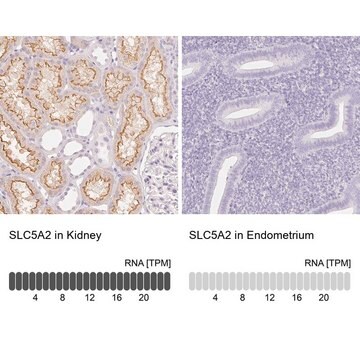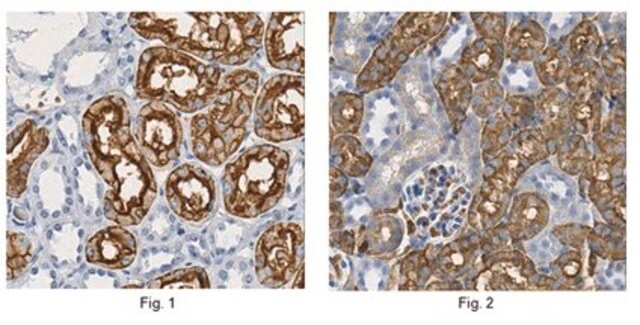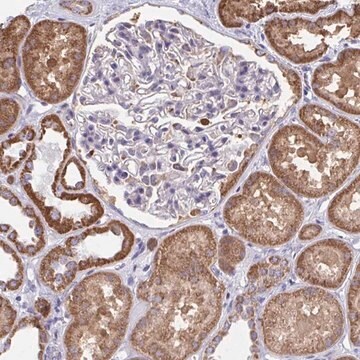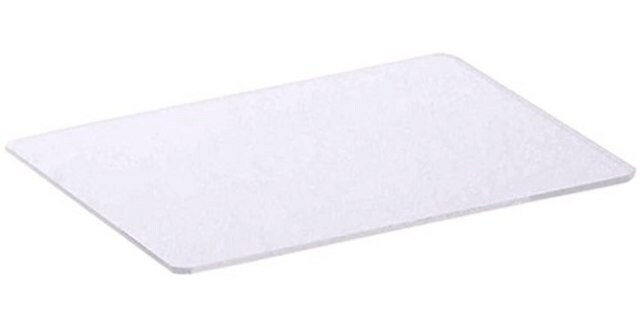General description
We are committed to bringing you greener alternative products, which adhere to one or more of The 12 Principles of Green Chemistry.This antibody is Preservative-free, produced without the harm or sacrifice of animals and exceptionally stable to allow for ambient shipping and storage if needed and thus aligns with "Waste Prevention", "Designing Safer Chemicals" and "Design for Energy Efficiency".
Click here for more information.
ZooMAb® antibodies represent an entirely new generation of recombinant monoclonal antibodies.Each ZooMAb® antibody is manufactured using our proprietary recombinant expression system, purified to homogeneity, and precisely dispensed to produce robust and highly reproducible lot-to-lot consistency. Only top-performing clones are released for use by researchers. Each antibody is validated for high specificity and affinity across multiple applications, including its most commonly used application. ZooMAb® antibodies are reliably available and ready to ship when you need them.
Specificity
Clone 2I4 is a ZooMAb® Rabbit recombinant monoclonal antibody that detects Sodium/glucose cotransporter 2. It targets an epitope within 14 amino acids from the third extracellular domain. It reacts with both isoforms
Immunogen
KLH-conjugated linear peptide corresponding to 146 amino acids from the third extracellular domain from the N-terminal half of human Sodium/glucose cotransporter 2 (SLC5A2).
Application
Quality Control Testing
Evaluated by Western Blotting in NIH3T3 cell lysate.
Western Blotting Analysis: A 1:1,000 dilution of this antibody detected SLC5A2 in NIH3T3 cell lysate.
Tested applications
Western Blotting Analysis: A 1:1,000 dilution from a representative lot detected SLC5A2 in Cos-1 cell lysate.
Immunocytochemistry Analysis: A 1:100 dilution from a representative lot detected SLC5A in HepG2 and NIH 3T3 cells.
Affinity Binding Assay: A representative lot of this antibody bound SLC5A2 with a KD of 1 x 10-12 in an affinity binding assay.
Immunohistochemistry (Paraffin) Analysis: A 1:1,000 dilution from a representative lot detected SLC5A in human kidney tissue sections.
Note: Actual optimal working dilutions must be determined by end user as specimens, and experimental conditions may vary with the end user
Anti-SLC5A2, clone 2I4 ZooMAb®, Cat. No. ZRB1475, is a recombinant Rabbit monoclonal antibody that targets SLC5A2 and is tested for use in is used in Affinity Binding Assay, Immunocytochemistry, Immunohistochemistry (Paraffin), and Western Blotting.
Target description
Sodium/glucose cotransporter 2 (UniProt: P31639; also known as Na(+)/glucose cotransporter 2, Low affinity sodium-glucose cotransporter, Solute carrier family 5 member 2, SLC5A2) is encoded by the SLC5A2 (also known as SGLT2) gene (Gene ID: 6524) in human. Glucose absorption from the diet and the glomerular filtrate are critical in maintenance of blood glucose levels. Sodium-glucose co-transporters play a key role in maintaining this homeostasis. This family of co-transporters (SLC5 family), which includes the high-affinity Na+-glucose transporter SGLT1 (SLC5A1) and low-affinity isoform SGLT2 (SLC5A2) are important mediators of epithelial glucose transport. While SGLT1 accounts for most of the dietary glucose uptake in the intestine, SGLT2 is responsible for the majority (~ 97%) of glucose reuptake in the tubular system of the kidney, with SGLT1 reabsorbing the remainder of the filtered glucose (~ 3%). SGLT2 is expressed in the early proximal tubule while SGLT1 is expressed in the later parts of the proximal tubule. In renal tissue, glucose reabsorption is dependent on active basolateral Na+ removal by the Na+/K+- ATPase to generate the electrochemical driving force for apical glucose entry via Na+-driven sodium glucose cotransport. On the basolateral side, glucose exits the cells following its concentration gradient to re-enter the bloodstream. SLC5A2 is a multi-pass membrane protein with six cytoplasmic domains, eleven transmembrane domains, and five extracellular domains. This ZooMAb® recombinant monoclonal antibody, generated by our propriety technology, offers significantly enhanced specificity, affinity, reproducibility, and stability over conventional monoclonals. (Ref.: Rieg, T., and Vallon, V. (2018). Diabetologia. 61(10); 2079-2086).
Physical form
Purified recombinant rabbit monoclonal antibody IgG, lyophilized in PBS with 5% Trehalose, normal appearance a coarse or translucent resin. The PBS/trehalose components in the ZooMAb® formulation can have the appearance of a semi-solid (bead like gel) after lyophilization. This is a normal phenomenon. Please follow the recommended reconstitution procedure in the data sheet to dissolve the semi-solid, bead-like, gel-appearing material. The resulting antibody solution is completely stable and functional as proven by full functional testing. Contains no biocide or preservatives, such as azide, or any animal by-products. Larger pack sizes provided as multiples of 25 μL.
Reconstitution
300 μg/mL after reconstitution at 25 μL per vial. Please refer to guidance on suggested starting dilutions and/or titers per application and sample type.
Storage and Stability
Recommend storage of lyophilized product at 2-8°C; Before reconstitution, micro-centrifuge vials briefly to spin down material to bottom of the vial; Reconstitute each vial by adding 25 μL of filtered lab grade water or PBS; Reconstituted antibodies can be stored at 2-8°C, or -20°C for long term storage. Avoid repeated freeze-thaws.
Legal Information
ZooMAb is a registered trademark of Merck KGaA, Darmstadt, Germany
Disclaimer
Unless otherwise stated in our catalog or other company documentation accompanying the product(s), our products are intended for research use only and are not to be used for any other purpose, which includes but is not limited to, unauthorized commercial uses, in vitro diagnostic uses, ex vivo or in vivo therapeutic uses or any type of consumption or application to humans or animals.










